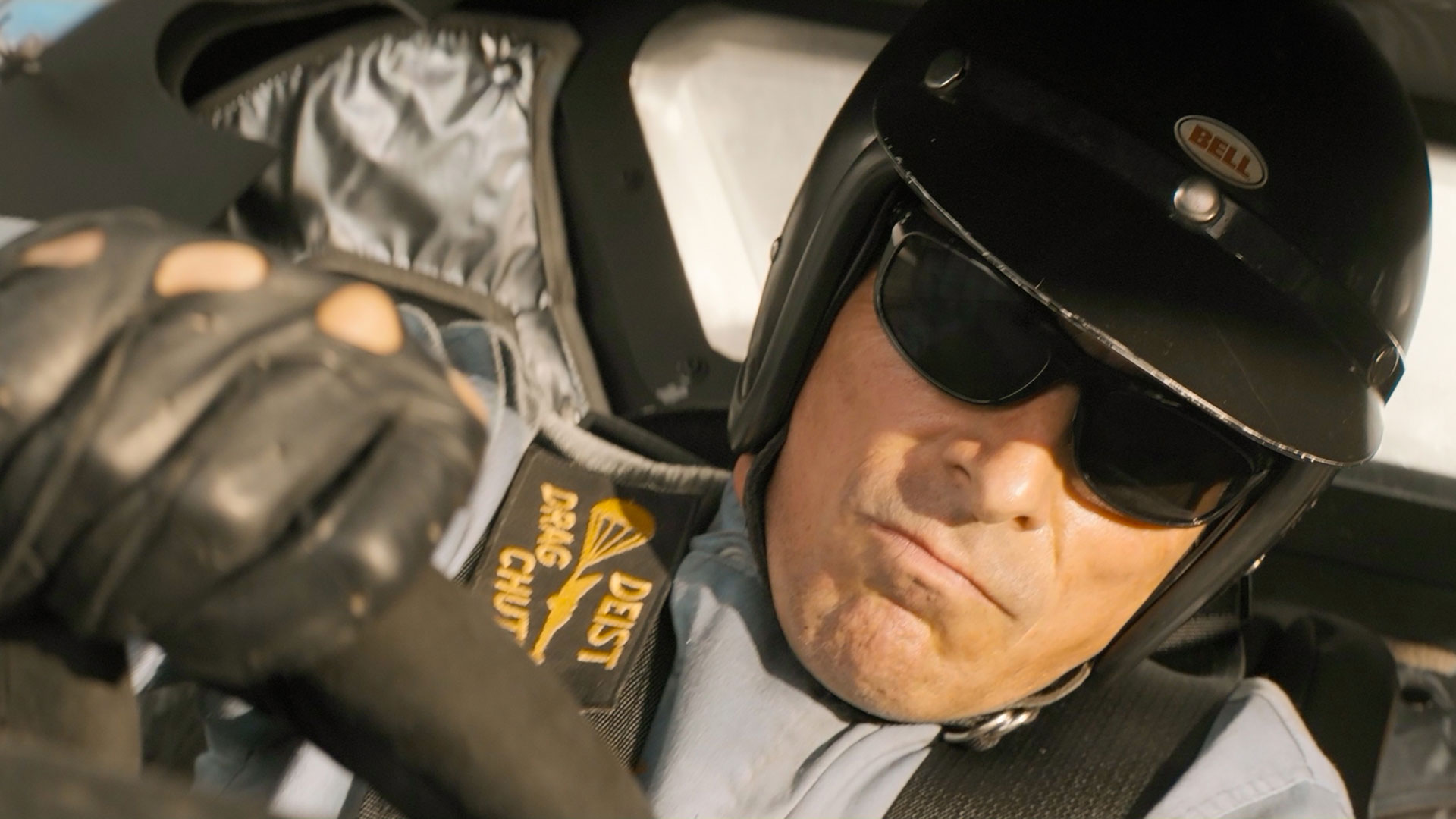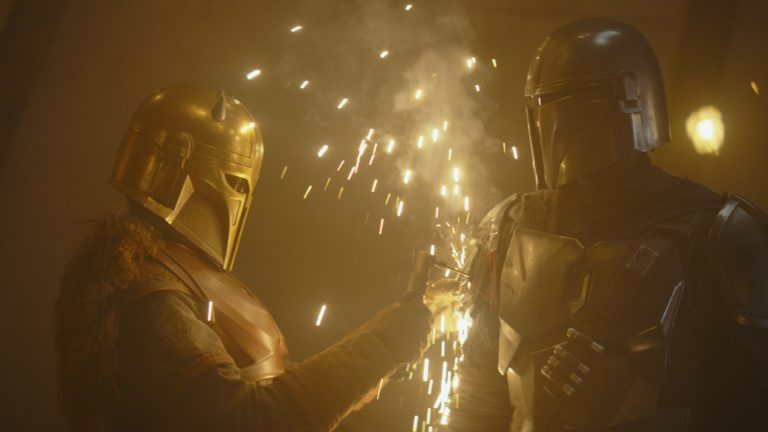
I joined Ford v Ferrari after interviews with Fox VP of Visual Effects Joe Conmy and then James Mangold. James could tell you more about why he chose to have me on board, but I feel we had a similar vision of how to integrate VFX into this movie — both practically and visually, in order to get them as invisible as possible. The plan was to shoot a lot of “real” references, either for lighting or car behaviors, so that we could get as close to the reality as we can. I was on set every day, and everything on this movie was a close collaboration between all departments in order to make it as efficient as possible and not get in the way of James’s organic way of shooting.
More specifically, it was with production designer François Audouy first, during the pre-production, where we discussed how to build only the necessary set portions — and to wisely choose their positions to immerse the actors enough — before taking over with the VFX. François had also faced some limitations on the coverage he could do cleaning up non-period items, so we tried to help as much as possible during post-production.
And secondly, we worked with cinematographer Phedon Papamichael and his team when shooting, to make sure his (incredible!) lighting made sense with the VFX extensions and other moving objects that would be added in post. The goal was to give James and Phedon as much freedom as possible, so it was important that everybody was on the same page about the VFX work. At a critical point during the stage shoot, we used prop cars on air cushions to shoot the actors’ reactions. Phedon had to light that for day and night, with rain. Our mutual understanding was imperative to make sure his lighting matched the outside plates, which we had shot beforehand due to the shooting schedule. He did a formidable job.
[Read more on Ford v Ferrari from SFX supervisor Mark Byers.]
Research and Development
Our main research was visual, about the time period and the events that take place in this movie. We watched a ton of documentaries about the different races, obviously, to get a sense for the architecture and crowd, but also about L.A. in the ’60s, to see what existed and what didn’t. That was important because you can get lost into preconceptions very easily. Things that you would think weren’t invented yet already existed and vice-versa. We also looked at the specific behaviors of the cars on tracks, since we knew we would have to help with CG cars. For instance, we watched Le Mans 71 with Steve McQueen and Grand Prix many times.
When selecting tools, I am very adaptable, and I just look at VFX tools for what they can bring to the table. In this particular case, we used a typical set-up with Foundry Nuke for comp and coloring, Autodesk Maya for CG (often, it allowed us to check the correctness of a model), Adobe Photoshop to draw concepts when Nuke was not enough, Tweak RV for internal reviews and Cinesync for vendor reviews. We had a lot of TV inserts, but not many motion graphics, as the period when the film takes place didn’t really call for it.
One very interesting aspect of the production has been the rain asset development. I wanted the rain to be bold on the track to enhance the contrast between dry and wet road, in order to make it look very dangerous. We went with extreme, pouring rain, which pleased James. But, wisely, he made us pull back sometimes to make sure we could read the cars and understand the story. This rain asset covered not only the rain falling but also all interactions that go with it, ground, car, windshield with the wipers, back trails etc. As most of the rain was added in post, for more latitude with the speed of the cars, we had to have a solid asset — or, more accurately, assets — that we could adapt to the different situations and camera moves and make look as real as possible.
From Set to Post-Production
François’ work on the set pieces resulted in fantastic references for us to work from. We captured most of the sets digitally to use as a base, making it very easy to replicate sets like the pits at Daytona and Le Mans. François and I had a lot of discussions about his vision for the production design on the movie, and we shared a lot of references, so I knew what was originally intended for each set and location. That was a great help in carrying that vision over in post with the VFX.
We had our chrome and grey balls with us for lighting reference, but our work was mostly large extensions or moving objects, so we used a plate car with a 360-degree camera on top to get moving HDRIs when we were shooting the backgrounds for the car interiors. These could be reused either to light CG elements or to feed LED screens during our stage time. We kept the use of the chrome ball very minimal, and only for shots where we couldn’t get lighting reference any other way.
A lot of tracking markers were involved, especially in Agua Dulce (in California, the set for the Le Mans starting line), where we had to create the stand side of the track in full and extend the pits both ways. Nothing existed but part of the foreground fence on the stand side, and only four out of 15 buildings on the other side were practical.
We were trying to get as much as we could in camera, but we ended up with about 1100 VFX shots. Most were extensions and crowd, but we added CG cars for about 90 of them and two dozen were full CG shots. Those were created out of absolute necessity — it would have been impossible to shoot them practically. The dashboard shots are a good example. It was impossible to place the camera where James wanted it to get the feeling he needed. That being said, we always tried to make them look like they had been shot practically, adding the right lighting and the necessary vibrations and choosing a camera angle that wouldn’t give the CG away.
Ford v Ferrari
Getting Automotive Action in Camera
by SFX supervisor Mark Byers

I got involved with the show through Fox producer Kevin Halloran, who had me meet with director James Mangold to talk about the cars and how we would achieve the look James wanted. We wanted to approach the car gags and all of the car racing shots as practical effects as much as possible. We wanted to get the cars, the driving, and the crashes with real cars and real drivers, or actors in real cars, as much as we could.
Combining VFX With Practicals
We knew from the beginning that we would try to shoot practical as much as possible, so we had to share setups. The SFX supervisor, Mark Byers, would throw a car in the air to get a practical impact, and then I would take over the beginning of the accident. That made it safe. We would enhance the crash afterward by adding debris, but the base was there with the right physics and so on. In my experience, the best scenario rarely happens, but Mark’s work was outstanding. We also worked together on the rain rigs, on car and on cranes. The SFX setup for rain was very flexible so I could choose, almost on the fly, if I wanted to use it or not. As I mentioned before, in certain conditions it was better to add the rain in post-production.
The LAX test track explosion was practical. We just had to enhance the lead-in to it by adding some fire starting on the car to justify the explosion. Only Miles’ death was redone, to give a better shape to the dust cloud and add a fireball. But, once again, we had shot a very good take with a practical SFX explosion that we used as reference.
The single most challenging sequence was probably Le Mans, as it was the most diverse event in the movie, VFX-wise. It had big set extensions, it took place at night and during all the hours of the day, there was a crowd along the track, and it had accidents, rain, face replacements, hero and background CG cars, full CG shots, helicopter, dashboards, clean-up and continuity fixes, product placement. The list goes on. The challenge was keeping all the details going in the right direction without losing sight of the big picture.
[Read more on Ford v Ferrari from SFX supervisor Mark Byers.]
Crafts: VFX/Animation
Sections: Creativity
Topics: Project/Case study cineSync maya Nuke olivier dumont Photoshop rv VFX
Did you enjoy this article? Sign up to receive the StudioDaily Fix eletter containing the latest stories, including news, videos, interviews, reviews and more.










